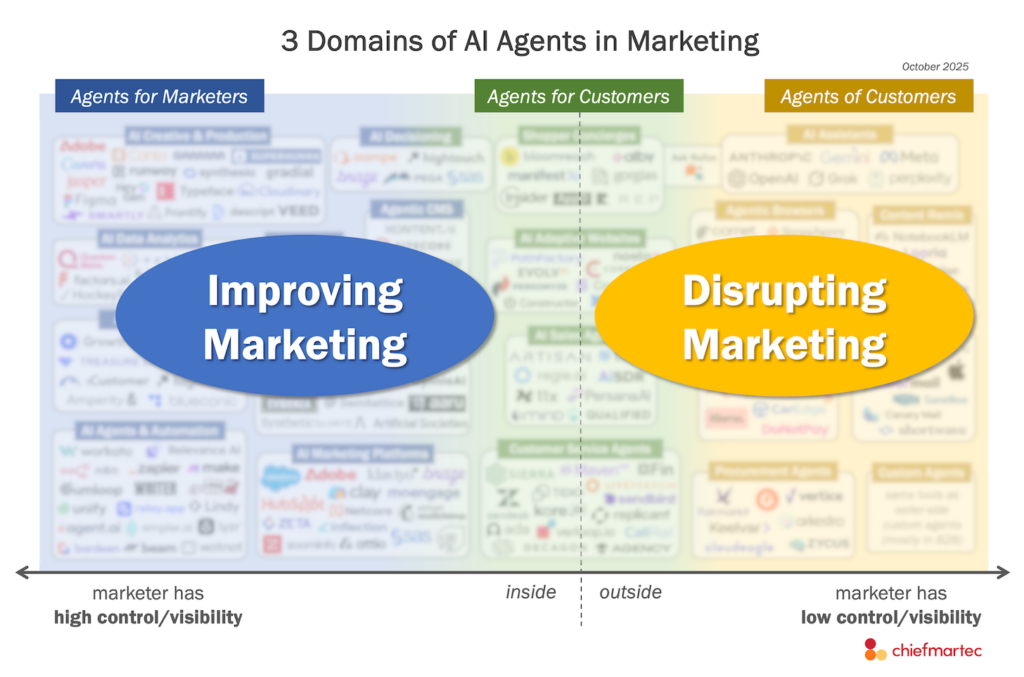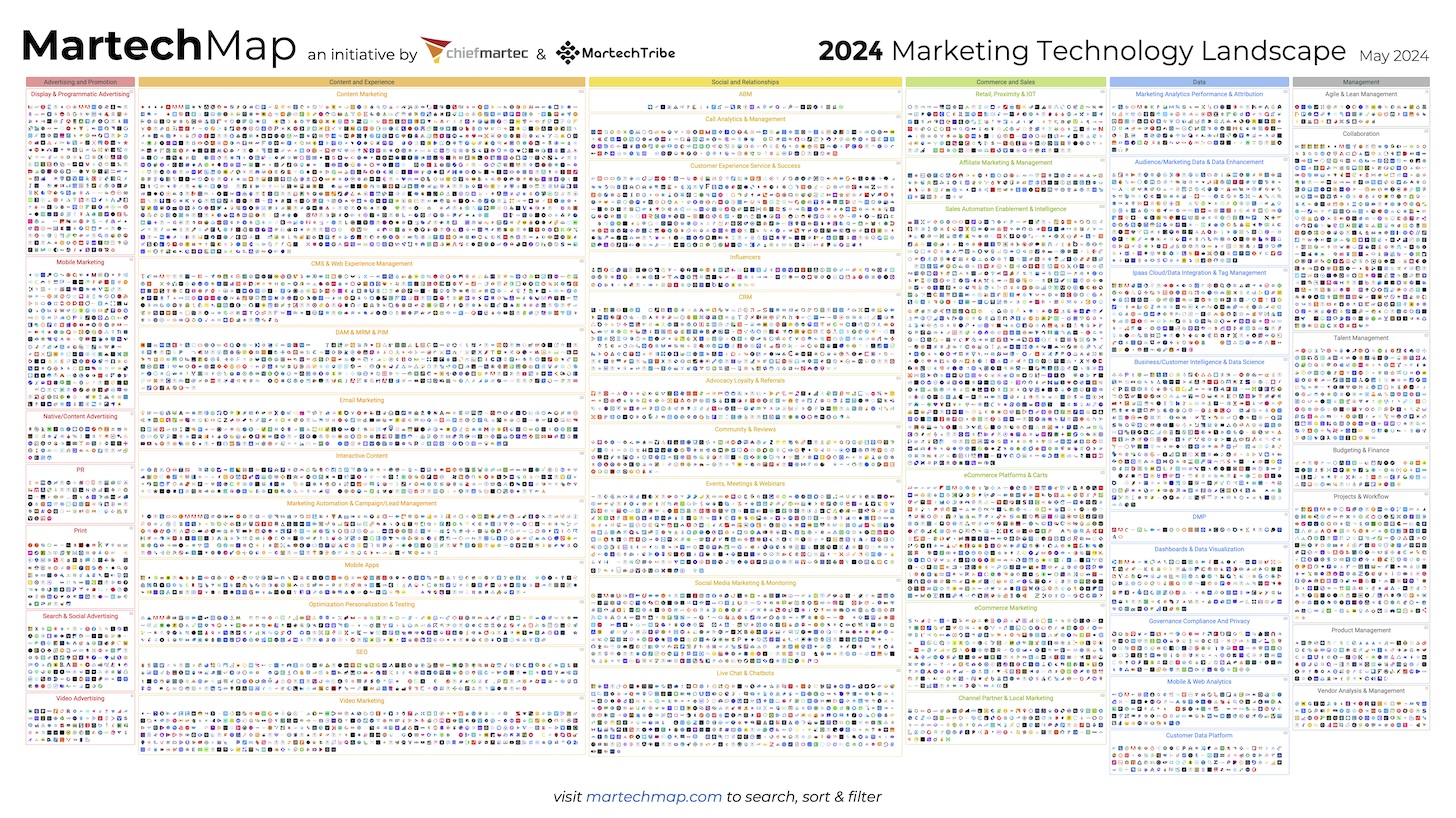
Happy #MartechDay to you! On the first Tuesday of May, we celebrate the martech industry and all the talented marketing technologists and marketing ops professionals who work in it. Cheers to you for all you do in pioneering this wild and woolly field.
It’s also the day when Frans Riemersma and I release our annual update to the marketing technology landscape. You can download a hi-res JPG image or a hi-res clickable PDF of it. Better yet, you can go to our interactive MartechMap.com site to search, filter, and zoom in — in other words, to actually be able to read it without a high-powered magnifying glass.
The headline news is, yes, the martech landscape grew for the 13th year in a row. It now has 14,106 marketing technology products — a net addition of 3,068 products since last year’s 11,038. That’s a crazy 27.8% growth year-over-year.

One of the things that was surprising was that there was only 2.1% churn from 2023 to 2024. A mere 263 vanished from last year’s landscape. More may have been acquired but are still being offered as stand-alone products with their original brand. And more may be mortally wounded by the turmoil of the past couple years but haven’t ceased operations. Yet.
It turns out that SaaS companies are hard to kill. If they’ve got a set of paying customers and low COGS expenses for running “lights on” in the cloud, they can probably limp along for years. I’m not saying that’s good — although on the bright side, it probably gives their customers an unhurried window for migration. Hey, I’m Mr. Brightside.
Two other statistics worth calling out. First, from the first landscape in 2011 to the one released today, there has been a staggering 9,304% growth in the number martech products in the market. Smoothing that curve over the past 13 years, it’s a remarkable 41.8% compound annual growth rate (CAGR).
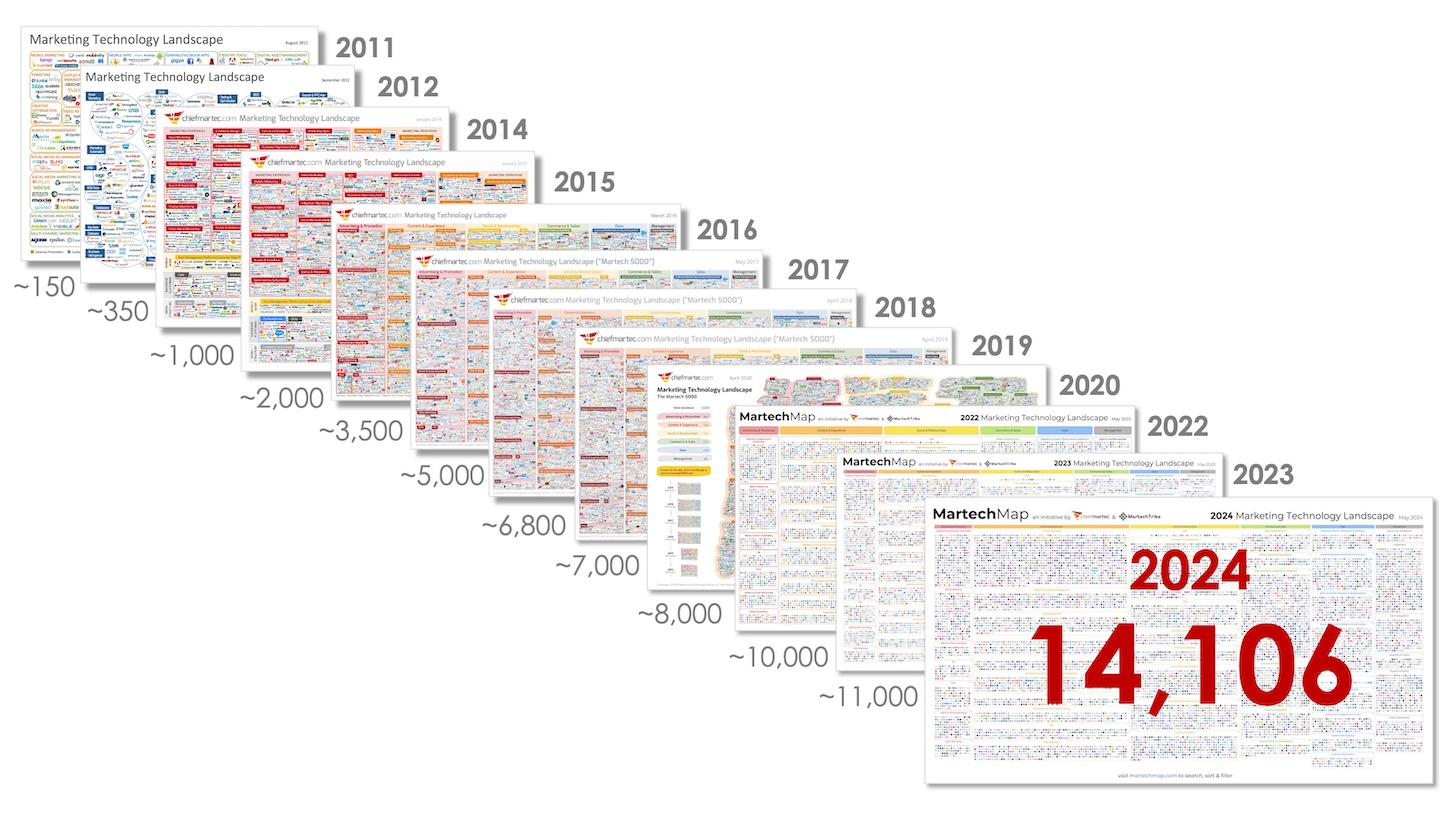
Now, I’m sure some of you are thinking, “Please, make the bad man take the horrid image away.” Others, on a more intellectual level, might be wondering how is this possible? Have the laws of business physics ceased to exist?
Well, the physics of software have certainly been upended. Anyone can create software in the cloud. Generative AI has only accelerated this. First by inspiring tens of thousands of developers to build new things on the back of powerful LLMs such as OpenAI, Gemini, Llama, Anthropic, etc. And second by facilitating development with AI-powered “co-pilots”.
To put this in perspective, there are now 1.8 million — yes, million — AI projects on GitHub (source: 2024 AI Index Report). It makes the martech landscape seem kinda, well, small.
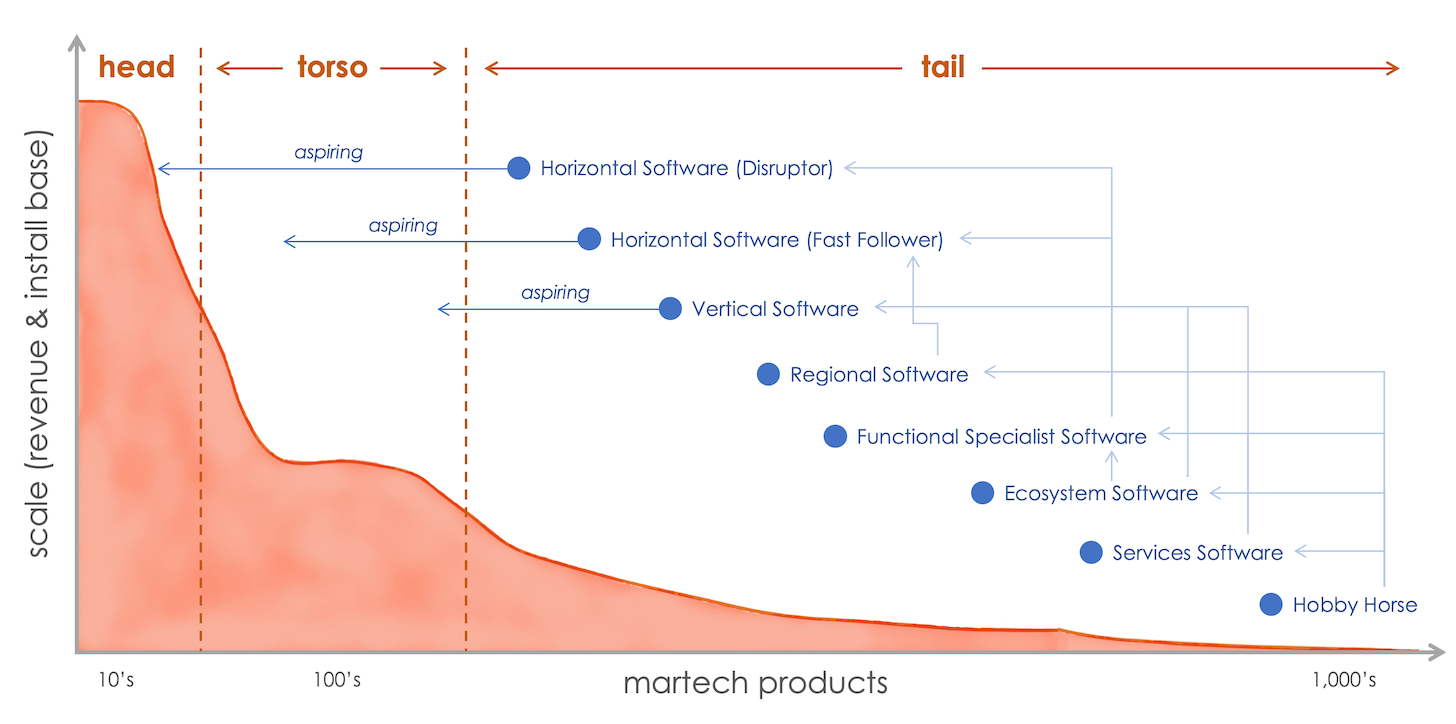
Now, that doesn’t mean these 14,106 are all large-scale software businesses. The vast majority of these products live in the “long tail” of small businesses, startups, and side hustles that specialize in a particular function, vertical, region, or platform ecosystem. More and more are apps offered by services firms, “productizing” some of their secret sauce. These long tail ventures won’t all be viable businesses in the long run. That’s the case for any business in any industry — 52% of the Fortune 500 from 2003 no longer exist today.
But just because these long tail ventures are small doesn’t mean they’re not viable either.
Consider for a moment that there are over 400,000 marketing agencies worldwide, a number that has steadily grown year-over-year (albeit at a more modest 2.6% growth rate). Similarly, not all of them will succeed. Many will fail. But new ones are continually born to replenish the industry. Is this what the future of the software industry looks like? Maybe.
It’s certainly what we see in the adoption of the products in martech stacks. Frans and I have collected and analyzed over 1,000 martech stacks from companies across the past 7 years. If you look at the distribution of products in these stacks — blue are products from the head of the industry’s long tail, red from the torso, and yellow from the long tail — you’ll notice that the ratio between these segments has been largely consistent over time.
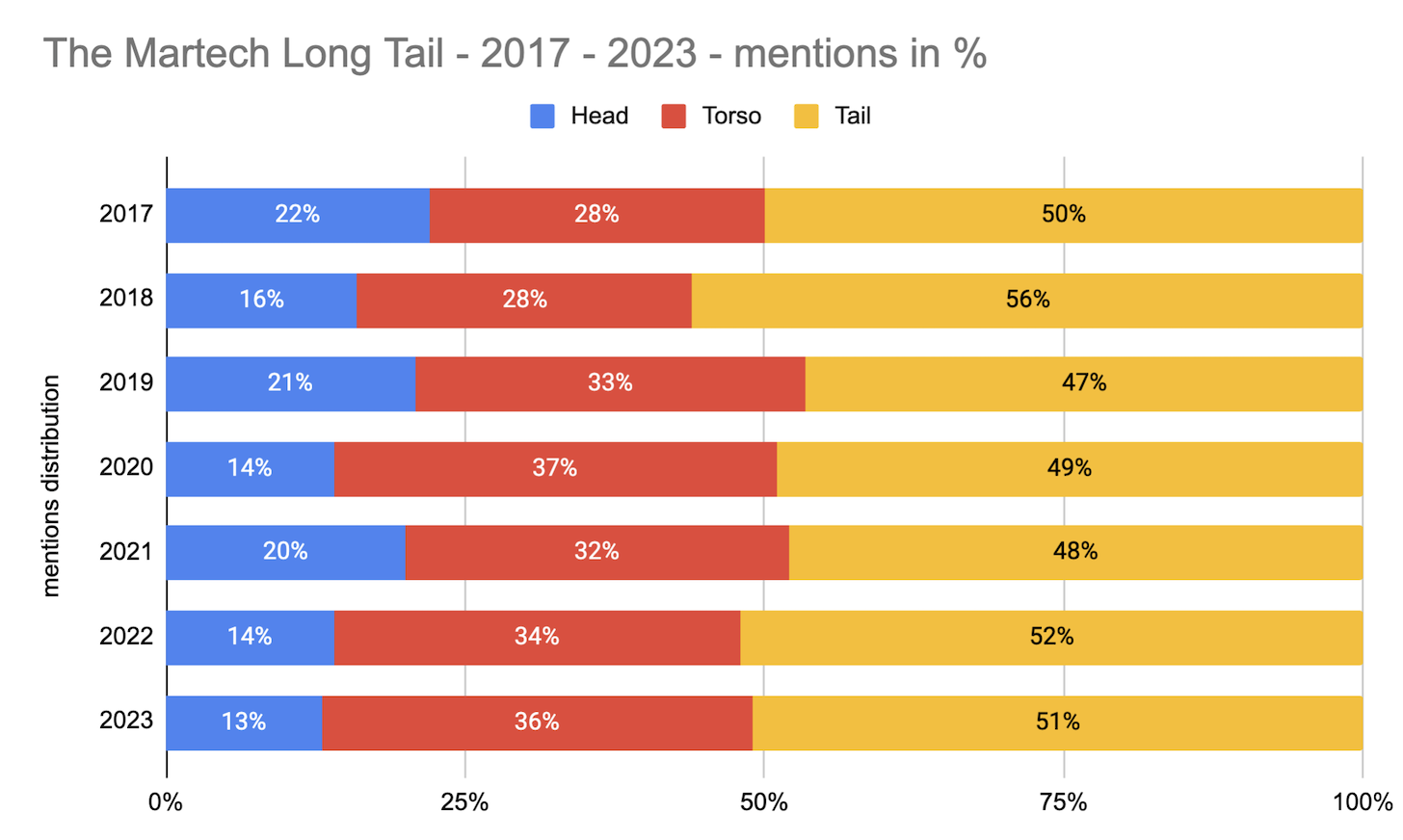
We’re sure over these 7 years, there have been plenty of cases of products from the long tail being absorbed into larger products in the head or torso. But while such consolidation most certainly happens, the long tail persists in representing about half of all the products in companies’ stacks.
The most logical explanation? New innovations in marketing and martech are continually arising, and a new generation of emerging martech tools are adopted each year to tap into that frontier.
The 2024 State of Martech Report
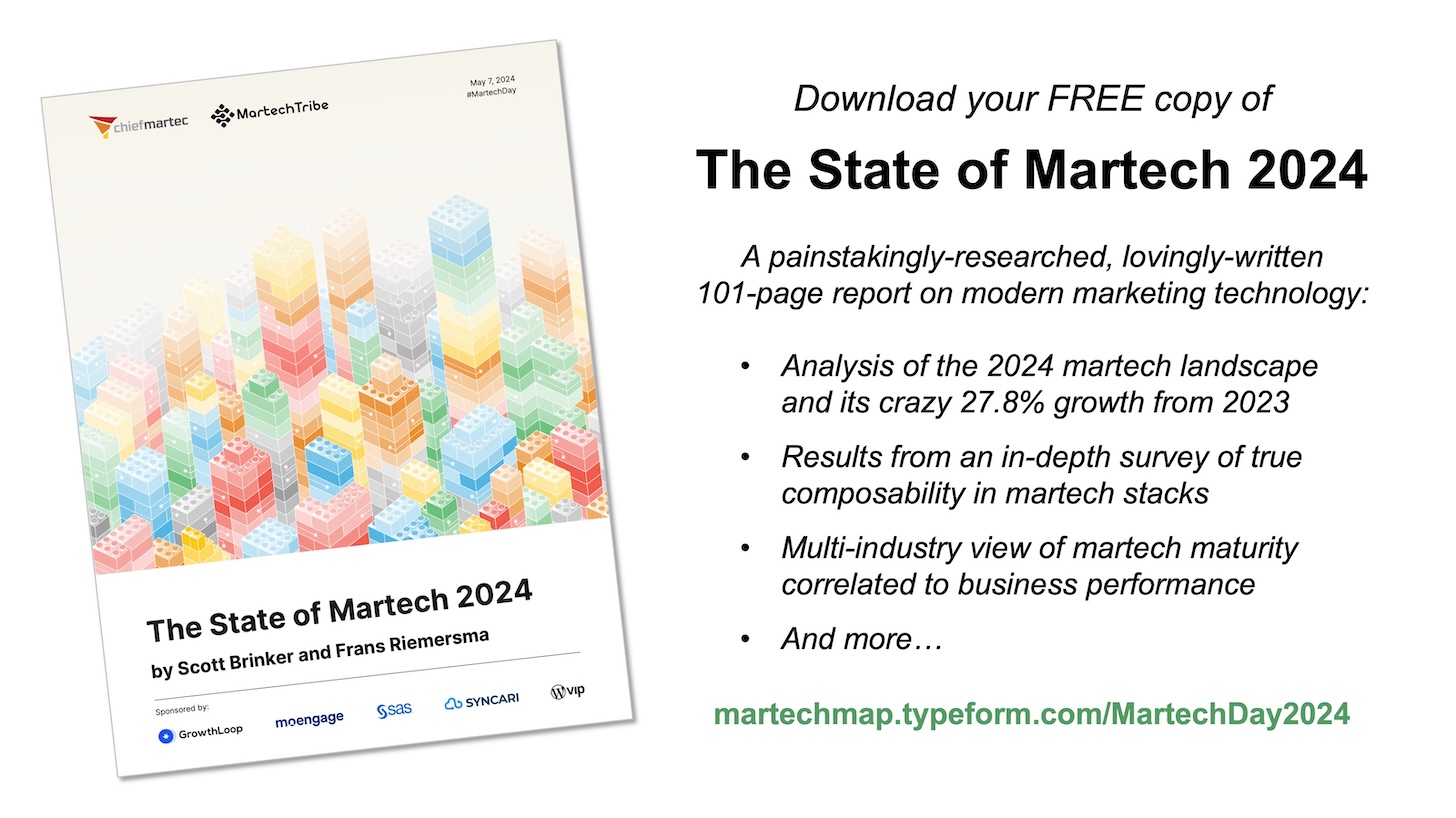
There’s a lot more to discuss about the dynamics of marketing and martech being shaped by this ever-changing, ever-growing software landscape. In particular, the impact this has on composability with martech apps and experiences (and vice versa).
We did an in-depth study of composability in martech last month, and the results were quite surprising. Some of the “conventional wisdom” around martech stack management turns out to be incorrect! There are a couple of our findings that will be especially astonishing to CFOs and CIOs.
All of the results from our composability study, as well as a deeper analysis of the 2024 martech landscape — including bonus data about marketing GPTs from the OpenAI store that didn’t make it on to our landscape, but are fascinating in their own right — are included in The 2024 State of Martech Report that we just released today.
Best of all, you can download the complete 101-page report for free.
We do ask you to register for the report and give us permission to share your contact info with the 5 sponsors who helped cover our expenses for maintaining the martech landscape and spending months on the research and analysis around it: GrowthLoop, MoEngage, SAS, Syncari, and WordPress VIP.

Of course, you can always opt-out afterwards. But by supporting our sponsors, you’re supporting us. (Thank you!)
